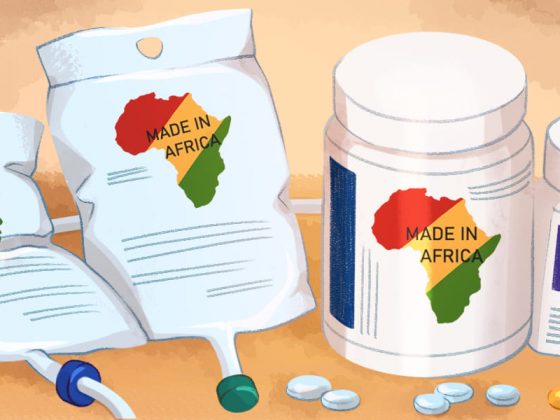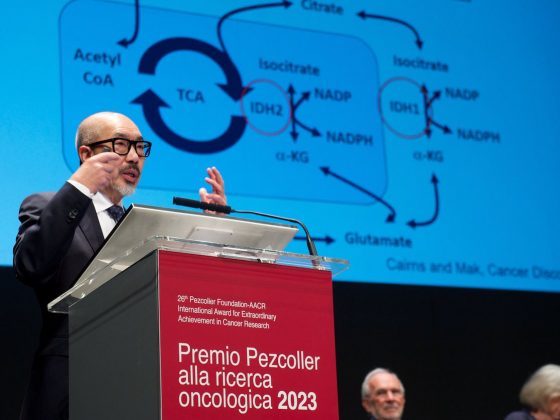Kidney transplant patients with high immune resilience, defined as the capacity to preserve/restore immunocompetence and control inflammation during inflammatory stress, are less likely to develop recurrent skin cancer compared to those with low immune resilience. An international study, published online in Nature Communications, 13 June, found that immune resilience differs widely among individuals. In addition to the benefits seen with kidney transplant recipients, people with optimal levels are more likely to live longer, resist HIV and influenza infections, and survive Covid-19 and sepsis.
“Our study introduces the concept of immune resilience and provides a framework to understand why people vary in their risk of both developing immunity-dependent diseases in the first place, and thereafter, in the rate of progression of disease,” Sunil Ahuja, the principal investigator, tells Cancerworld. “These findings have implications for risk stratification of immune health across the age spectrum and for improving health outcomes.”
A long-standing mystery in medicine is why people manifest such wide differences in lifespan, health status across age, and susceptibility to infectious diseases and cancer? One theory has been that infection-resistant mechanisms may confer advantages for lower comorbidity burdens and increased longevity. Ahuja, an infectious diseases physician from the University of Texas Health Science Center at San Antonio, USA, has always been interested in why people appear to be more or less susceptible to diseases. For example, some people who are repeatedly exposed to the HIV virus do not become infected.
Ahuja hypothesised that the mechanism conferring the advantage is immune resilience, which he defines as “the capacity to preserve and/or rapidly restore immune functions that promote disease resistance and longevity (immunocompetence), as well as control inflammation during acute, repeated, or chronic immune (antigenic) stimulation associated with inflammatory stress.”
People’s immune resilience, Ahuja believes, can be categorised into four groups. The most protected group has high immunocompetence and low inflammation, the least protected group has low immunocompetence and high inflammation, and the two intermediate protected groups have high immunocompetence and high inflammation or low immunocompetence and low inflammation.
Ahuja, a past recipient of the National Institutes of Health (NIH) Merit Award, began to test the concept of immune resilience in the context of HIV-AIDS. Building on those initial findings, the ambitious global project analysed 48,500 participants, aged between 9 and 103 years, who had been enrolled in 18 different studies conducted in Africa, Europe, and North America. The wide-ranging studies included participants both with and without various acute, repetitive, or chronic challenges to the immune system (including influenza, HIV, Covid-19, and tuberculosis). “We asked the simple question of whether people with metrics showing good immune resilience, despite inflammatory stress, have better outcomes in comparison to those with metrics of poor immune resilience,” explains Ahuja. “We looked to establish whether there was an innate capacity to preserve immune resilience across people with different types of exposure, which could be measured with a uniform metric?”
To measure immune resilience, the team developed two metrics. The first metric, designed to identify ‘immune health grades’ (IHGs), calculates the balance between infection-fighting CD8+ and CD4+ T-cells. The metric comprises a four-tier grading system, ranging from IHG-I, representing the highest level of resilience, to IHG-IV, representing the lowest level. IHG-I was assigned as the indicator of optimal immune resilience after the team demonstrated in a 2021 J Allergy Clin Immunol paper that IHG-I preservation during Covid-19 infection was associated with resistance to severe infection.
The second metric was based on the expression levels of genes associated with survival or mortality in patients with acute Covid-19 and in the Framingham Heart Study, a long-term effort to identify common factors and characteristics contributing to cardiovascular disease. Higher expression of a gene signature they named as the ‘survival-associated signature’ (SAS-1) associated with survival in both cohorts; SAS-1 comprised genes related to immunocompetence. Higher expression of the other gene signature they named the ‘mortality-associated signature’ (MAS-1) associated with mortality in both cohorts; MAS-1 comprised genes related to inflammation. Persons with the combination of higher expression of SAS-1 and lower expression of MAS-1, tracking a higher immunocompetence-lower inflammation status, were more likely to have IHG-I, the indicator of optimal immune resilience.
In the Nature Communications study, the researchers examined the associations of these metrics of immune resilience across study populations representative of increasing levels of inflammatory stress.
Taken together the studies show that individuals with optimum levels of immune resilience were most likely to live longer, resist HIV infection or the progression from HIV to AIDS, resist symptomatic influenza, survive Covid-19, and survive sepsis.
Included in the analysis was a cohort of kidney transplant recipients developed by Matthew Bottomley (University of Oxford, UK), a co-author in the study. The team measured immune resilience metrics in kidney transplant recipients, a group known to have a 100-fold excess risk of developing skin cancer. “We indexed the transplant recipient to their first squamous cell cancer and asked whether their metrics of immune resilience related to their chances of developing a second cancer,” explains Bottomley.
At the time of diagnosis of the first cancer episode, 9, 23, and 8 people were classified as having optimal, intermediate, and worse immune resilience, respectively. Survival plots indicate that at about 250 days from the first cancer episode, none of the people with optimal immune resilience at the time of the first cancer episode had developed a second episode. In contrast, during this interval, people with intermediate and worse immune resilience manifested the intermediate and fastest rates of progression to a second episode of cancer (log rank P=0.038).
In addition to the example of immune resilience influencing cancer outcomes in kidney transplant recipients, the researchers summarised data from other large cohorts where metrics of poor immune resilience influenced cancer outcomes and leukaemia progression rates.
In other studies, they show that the ability to maintain optimal immune resilience during a respiratory virus infection, measured by high SAS-1/low MAS-1, correlated with an absence of symptoms. They also noted that mitigation of specific causes of inflammatory stress helped restore immune resilience.
The team demonstrated that, in all studies, the proportion of people with optimal immune resilience was highest in the younger subjects and lower in the oldest. However, age was not the single determinant factor of immune resilience, as some younger people had metrics commonly seen in older people and vice versa. Another factor noted across study populations, was that women had higher levels of optimal immune resilience compared with men.
In future, Ahuja believes, the introduction of immunologic resilience metrics would allow precision immune health monitoring. “Such monitoring may allow for better preventive measures as well as tailoring therapies,” he says.
For example, knowing people’s immune health might enable the introduction of strategies to improve response to vaccination. “From our data, we have hope that this is not a hardwired system and that there could be a possibility of manipulating the system,” says Ahuja. In the future, it is possible that drugs might be developed to improve immune resilience.
Measuring metrics in the early stages of different illnesses may enable detection of patients requiring more aggressive therapy and also those who require enhanced screening for recurrence or severe disease.
Implications for drug development include ensuring that active and control arms of a clinical trial are properly balanced for immune resilience, just as they are for sex and age, to safeguard against bias.
Ultimately, says Ahuja, strategies to boost immune resilience might help address disparities among many populations of people with diseases, such as cancer, and viral infections, like Covid-19.












